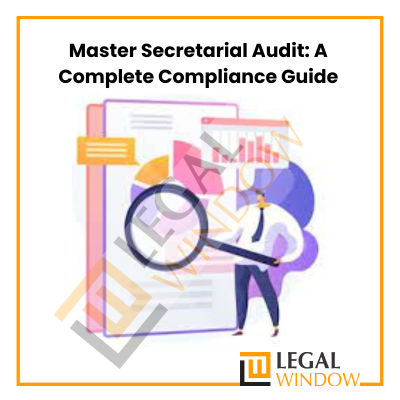
Are you worried about transitioning the status of your active company into dormant? We will deal with your concern through this blog. Imagine a scenario where a busy business strategically calms and suspends its operations to pave the way for future growth. Companies, like living organisms, go through different stages of growth and development. One such transition that can occur is a change in status from an active company to a dormant one. This shift means a temporary stoppage of operations and a change in the company’s financial and legal obligations. In this article, we will discuss the change in the status of the company from active to dormant.
What is Dormant Status?
A dormant company has ceased its business activities and has not carried out any significant financial transactions during a certain period. The exact definition may vary by jurisdiction, but generally, a company becomes dormant when it ceases to conduct its normal business operations and is not actively generating income. However, it is important to note that even in its dormant state, the company remains a legal entity and retains ownership of assets, intellectual property, and all outstanding liabilities.
Reasons for the Change in Status of the Company from Active to Dormant
There are several reasons why a company may decide to go from an active state to a dormant state. Common factors include:
- Seasonal or cyclical businesses: Some businesses, such as those in tourism or agriculture, experience different peak and off-peak periods. During the off-season, these companies may choose to be inactive to reduce costs and conserve resources for the next active period.
- Strategic Restructuring: Companies undergoing internal restructuring, mergers, or acquisitions may temporarily opt for dormant status. This allows them to focus on integrating operations, reviewing strategies, and ensuring a smooth transition before resuming normal business activities.
- Financial difficulties: If a company is facing financial problems or has suffered significant losses, it may choose to remain idle to stabilize its financial position. This could include temporarily suspending operations while seeking new investment, renegotiating debt, or implementing cost-cutting measures.
- Intellectual Property Protection: Companies with valuable intellectual property (IP), such as patents or trademarks, may choose to remain inactive to protect their assets. By temporarily halting operations, they can focus on maintaining and protecting their IP without taking unnecessary risks.
Documents required to Change to a Dormant Company
The list of documents required for changing the status of the company from active to dormant are-
- Resolution of the board of directors authorizing the change into a dormant company
- Copy of the special resolution adopted at the EGM
- Copy of the MoA and AoA
- The last financial statements and annual income of the company
- Statement of affairs duly verified by CA or auditor
- Lender’s consent if there is any loan/debt
- Declaration or Certificate of Company Directors.
Process for the Change in Status of the Company from Active to Dormant
The steps to follow for changing the status of a company from active to dormant are given below-
- Step 1– Convening the board meeting: The board of directors resolves to approve the filing of an application for the conversion of the company into a dormant company at a meeting of the board of directors. The Board of Directors will also authorize one director to act on this behalf and to send notices to all shareholders of the Extraordinary General Meeting (EGM).
- Step 2– Notice for EGM: Issue the relevant notice of the extraordinary general meeting together with an explanatory statement clearly stating the reasons why the board of directors proposes to change the company’s status as a “dormant company”
- Step 3- Certification of the CA statement: While an extraordinary general meeting is planned, the managing director must in practice cooperate with the statutory auditor or chartered accountant to certify the company’s statement of affairs (financial).
- Step 4– Conducting EGM: On the appointed day of the extraordinary general meeting, it will be held according to the secretarial standards and with the required quorum, a special resolution must be passed approving the application for the transfer of status from an active to a dormant company.
- Step 5– Filing the MGT-14: Each special resolution passed at an extraordinary general meeting must be filed with the commercial register on the prescribed form MGT-14 with a certified copy of the resolution together with the notice of the extraordinary general meeting within 30 days of the extraordinary general meeting.
- Step 6– Request to change status: After filing the MGT-14 with the ROC, the application in Form MSC-1 along with a scanned copy of all resolutions, declarations, consent of creditors, and CA certificate is filed with the ROC for approval.
- Step 7- Changing the status of the company from active to dormant: The Registrar of Company examines the application submitted in MSC-1 and if found to be in order, issues a Certificate in the form of MSC-2. With the issuance of Form MSC-2, the status of the company changes to Dormant Company.
Implications of the Change in Status of the Company from Active to Dormant
The transition from an active to a dormant company has various consequences for both the business and its shareholders:
- Reduced reporting obligations: Dormant companies usually have simplified reporting requirements compared to active companies. This includes a reduced frequency of financial statements, tax filings, and regulatory filings, which can lead to cost savings in terms of accounting and compliance costs.
- Continuity of legal entity: The Company remains a legal entity despite its inactivity. He can still own property, enter into contracts and take legal action if necessary. This provides a sense of security and allows future reactivation or transfer of assets without the need to establish a new entity.
- Restricted Business Activities: Dormant companies are subject to restrictions on their business activities. They are generally prohibited from engaging in revenue-generating operations but may engage in non-commercial activities such as holding or managing assets, paying expenses, or managing legal affairs.
- Maintaining a company’s reputation: Dormant activity can have consequences for a company’s reputation, especially if stakeholders perceive it as a sign of financial instability or operational difficulties. Maintaining effective communication with shareholders, employees, and customers is critical to mitigating negative perceptions and providing reassurance about the company’s plans.
Final words
The transition from an active to a dormant company represents a strategic decision to temporarily suspend business activities. While the reasons for inactivity may vary, companies must understand the implications and obligations associated with this change in status. By carefully managing their resources, commitments, and communications, dormant companies can prepare for a successful reactivation or adapt their business strategies accordingly.
In case of any query regarding the change in status of the company from active to dormant, a team of expert advisors from Legal Window is here to assist you at every step. Feel free to reach us at admin@legalwindow.in.
Neelansh Gupta is a dedicated Lawyer and professional having flair for reading & writing to keep himself updated with the latest economical developments. In a short span of 2 years as a professional he has worked on projects related to Drafting, IPR & Corporate laws which have given him diversity in work and a chance to blend his subject knowledge with its real time implementation, thus enhancing his skills.
Categories
- Agreement Drafting (23)
- Annual Compliance (11)
- Change in Business (36)
- Company Law (148)
- Compliance (90)
- Digital Banking (3)
- Drug License (3)
- FEMA (17)
- Finance Company (42)
- Foreign Taxation (6)
- FSSAI License/Registration (14)
- GST (119)
- Hallmark Registration (1)
- Income Tax (201)
- Latest News (34)
- Miscellaneous (164)
- NBFC Registration (8)
- NGO (14)
- SEBI Registration (6)
- Section 8 Company (7)
- Start and manage a business (21)
- Startup/ Registration (130)
- Trademark Registration/IPR (40)
Recent Posts
About us
LegalWindow.in is a professional technology driven platform of multidisciplined experts like CA/CS/Lawyers spanning with an aim to provide concrete solution to individuals, start-ups and other business organisation by maximising their growth at an affordable cost.








